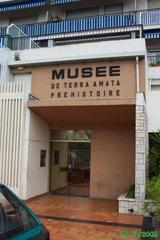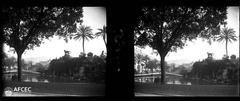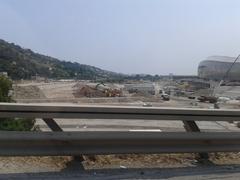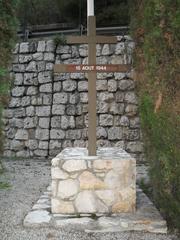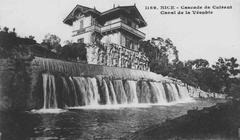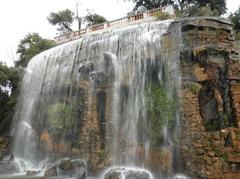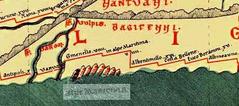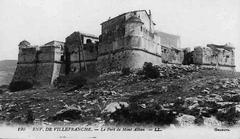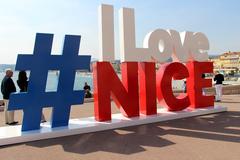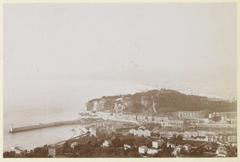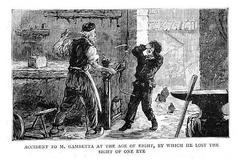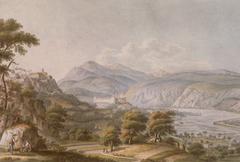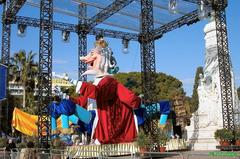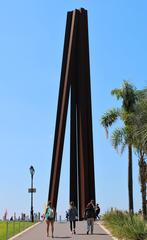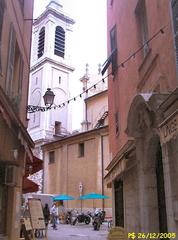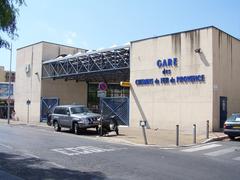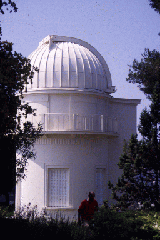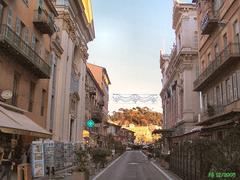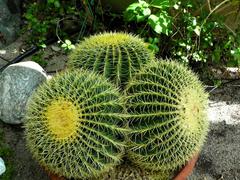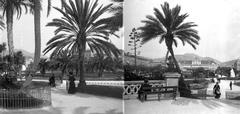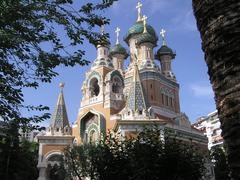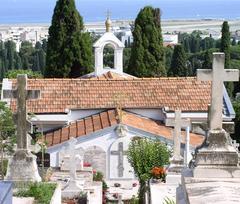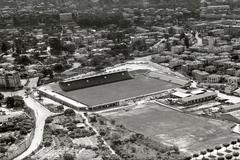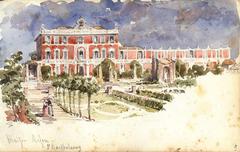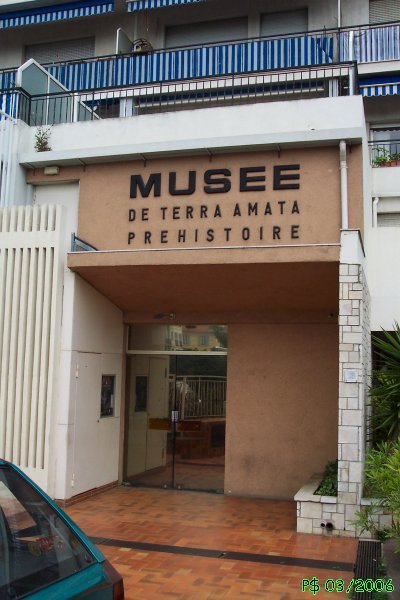
Terra Amata Visiting Guide: Nice, France – Tickets, Hours, and Essential Tips
Date: 15/06/2025
Introduction: Exploring Prehistory in the Heart of Nice
Perched on the scenic slopes of Mont Boron overlooking the Mediterranean, Terra Amata is not only one of Europe’s most pivotal Lower Paleolithic archaeological sites but also a captivating destination for anyone interested in the origins of human civilization. Discovered unexpectedly in 1966 during construction work, Terra Amata has transformed our understanding of early human adaptation, technological innovation, and environmental interaction nearly 400,000 years ago. Today, the Musée de Préhistoire de Terra Amata invites visitors to witness this ancient chapter through immersive exhibits, reconstructed shelters, and hands-on educational experiences.
This comprehensive guide covers Terra Amata’s historical significance, key archaeological features, practical visitor details, and tips for making the most of your visit—whether you’re an archaeology enthusiast, a family seeking educational adventure, or a traveler exploring Nice’s diverse heritage. (Explore Nice Côte d’Azur, Best of Nice Blog)
Historical Context and Archaeological Significance
Discovery and Excavation
Terra Amata was uncovered in 1966 during the preparation of a building site, when lead archaeologist Henry de Lumley identified layers of prehistoric habitation. The site, originally a beach some 26 meters above today’s sea level, revealed 29 occupation layers, over 28,000 artifacts, and evidence of one of the earliest known constructed shelters in Europe (Trek Zone).
Human Innovation: Habitation, Fire, and Tools
- Shelters: Post holes and stone arrangements mark the footprint of oval huts, possibly covered with vegetation or animal skins, making these among the earliest known human dwellings on the continent.
- Controlled Fire: Carefully constructed stone hearths and charred animal bones demonstrate the managed use of fire—an evolutionary milestone for warmth, cooking, and protection.
- Stone Tools: The site yielded bifaces, scrapers, and picks crafted from local beach pebbles, evidence of sophisticated tool-making by Homo erectus.
- Diet and Faunal Remains: Remains of elephants, rhinoceroses, deer, and small mammals indicate a broad diet and effective hunting strategies (Paola Villa, Academia.edu).
Environmental and Scientific Context
Set during the Middle Pleistocene—a time of alternating warm and cold climates—Terra Amata’s rich faunal and sedimentary record captures the adaptability and seasonal movements of early humans. The site’s stratigraphy suggests repeated, possibly annual, occupation patterns, reflecting both social organization and environmental awareness.
Ongoing Research and Comparative Importance
While initial interpretations emphasized advanced social behaviors, later studies debate the degree of intentionality behind certain features, yet Terra Amata’s role in understanding early human technology and settlement remains undisputed. It is frequently compared with other major prehistoric sites in the region, such as the Grotte du Lazaret, which provide a broader context for human evolution along the Mediterranean (New Scientist).
Practical Visitor Information
Location & How to Get There
- Address: 25 Boulevard Carnot, 06300 Nice, France
- Public Transport: Bus lines 7, 15, and 38 serve the area; Tram Line 2 to Port Lympia; short walk from Old Port.
- By Car: Limited street parking nearby. Public transportation is recommended, especially during peak hours.
Opening Hours
- Open: Daily except Tuesdays, 10:00 AM – 6:00 PM
- Closed: Tuesdays, January 1st, Easter Sunday, May 1st, and December 25th
- Ticket Office: Closes 30 minutes before museum closing
Check the official museum website for up-to-date hours.
Ticket Prices
- Standard Adult: €7
- Reduced (students, groups 10+): €5
- 3-day Museum Pass (all city museums): €15
- Children (under 18), Nice Côte d’Azur residents: Free (with proof)
- Guided Tour Supplement: €7
- Children’s Workshop: €9 per child
Book on-site or online via the museum’s website.
Accessibility & Facilities
- Wheelchair access throughout the museum (ramps and elevators)
- Restrooms and cloakroom available
- Multilingual panels (French and some English)
- Gift shop
- No on-site café, but plenty of dining options nearby
For specific accessibility needs, contact the museum in advance.
Museum Experience: Exhibits and Activities
Permanent Exhibitions
- Life-size reconstructed huts and hearths offer an immersive glimpse into prehistoric daily life.
- Artifact displays feature original tools, animal bones, and interactive hologram technology.
- Educational panels explain archaeological methods and human evolution.
- Stratigraphic sections showcase the layers of occupation and scientific analysis.
Temporary Exhibitions
The museum regularly features special exhibitions, such as “Tools, Between Art and Science,” which explore the dual roles of prehistoric tools as both functional and artistic objects (Hotel West End: Art and Culture in Nice).
Guided Tours & Workshops
- Guided tours (mainly in French; English available by advance booking) provide expert insight.
- Children’s workshops focus on prehistoric crafts, fire-making, and tool production (schedule varies).
- Lectures and events are held throughout the year—check the museum calendar for details.
Visitor Tips
- Best Times: Visit early morning or late afternoon on weekdays for a quieter experience.
- Language: Most displays are in French; limited English translations. Book English tours ahead.
- Photography: Non-flash photography is usually allowed.
- Visit Duration: 1–2 hours recommended for full exploration.
- Combine Visits: The museum is close to other major sites like Grotte du Lazaret, the Nice Archaeology Museum, and the Promenade des Anglais.
- Family-Friendly: Interactive displays and workshops make the museum engaging for children.
Visual and Interactive Media
- Virtual tours and high-resolution images are accessible on the museum website.
- On-site, dioramas and reconstructions bring prehistoric scenes to life.
- Interactive flint tools exhibit.
Frequently Asked Questions (FAQ)
Q: What are the Terra Amata Museum visiting hours?
A: Open daily except Tuesdays, 10:00 AM–6:00 PM; closed on certain holidays.
Q: How much are tickets?
A: Standard adult: €7; reduced: €5; children under 18 and city residents: free.
Q: Is the museum accessible for visitors with reduced mobility?
A: Yes, ramps and elevators are provided.
Q: Are guided tours available in English?
A: Yes, but require advance booking.
Q: Can I take photos?
A: Non-flash photography is generally permitted; check signage.
Contact Information
- Phone: +33 (0)4 93 55 59 93
- Email: [email protected]
- Website: Official Museum Site
Summary and Recommendations
Terra Amata stands as a monument to early human ingenuity and adaptation, offering one of Europe’s richest glimpses into prehistoric life. With accessible visiting hours, affordable ticketing, and a central location, the museum is ideal for tourists, families, scholars, and anyone curious about our shared origins. Its proximity to other notable Nice historical sites allows you to expand your cultural itinerary.
To enhance your visit, consider downloading the Audiala app for audio guides and interactive content, and consult the museum’s website for the latest updates on exhibitions and workshops. Plan your journey to Terra Amata and step back nearly half a million years into the story of humanity. (Musée de Préhistoire de Terra Amata, Explore Nice Côte d’Azur, Best of Nice Blog)
